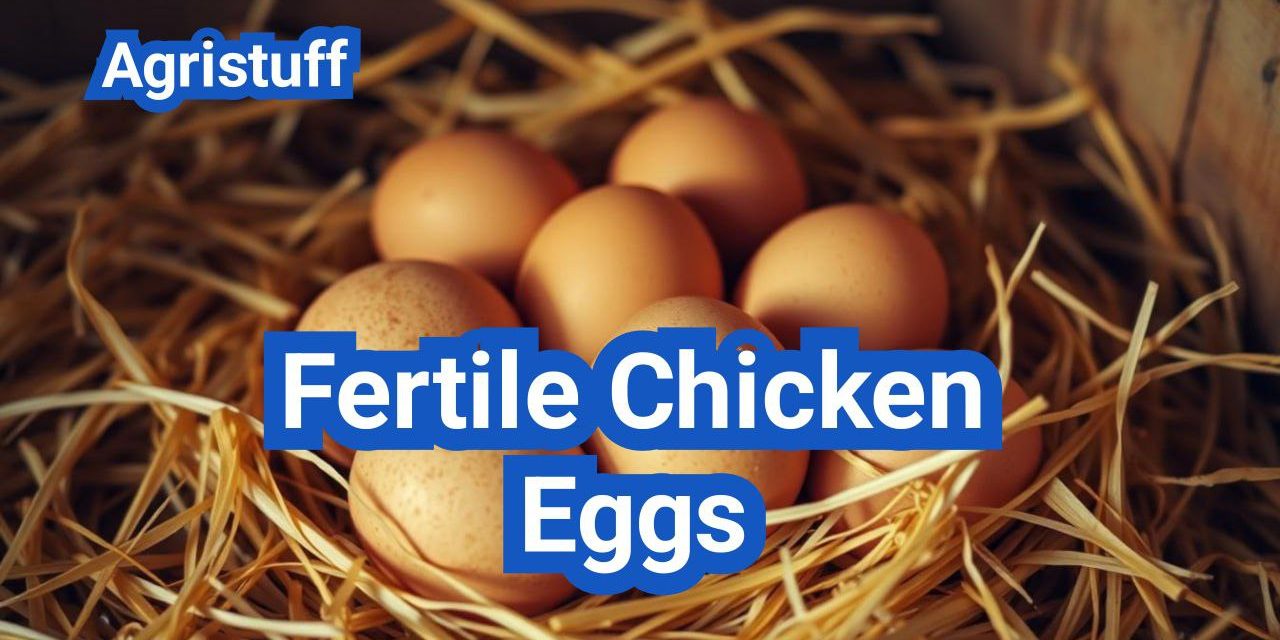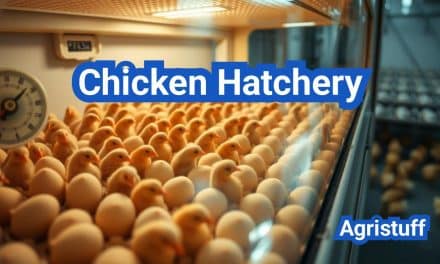For those involved in poultry farming or backyard chicken keeping, understanding the importance of fertile chicken eggs is crucial for successful hatching. The process of obtaining fertile eggs involves ensuring that the eggs are properly fertilized, which requires a healthy rooster and optimal breeding conditions.
The chicken egg fertilization process is a complex biological process that depends on several factors, including the health and genetics of the breeding stock, nutrition, and environmental conditions. Ensuring high hatch rates requires careful management of these factors to produce fertile chicken eggs for hatching.
Key Takeaways
- Understanding the importance of fertile chicken eggs for successful hatching.
- The role of a healthy rooster in the fertilization process.
- Factors influencing the chicken egg fertilization process.
- Best practices for achieving high hatch rates.
- The significance of optimal breeding conditions and nutrition.
The Science Behind Fertile Chicken Eggs
The science behind fertile chicken eggs encompasses various aspects, including the fertilization process and embryonic development. Fertile eggs are the result of a successful mating between a rooster and a hen, where the rooster’s sperm fertilizes the hen’s egg yolk in the oviduct.
What Makes an Egg Fertile?
An egg becomes fertile when the sperm from the rooster penetrates the egg yolk, allowing the fusion of genetic material. This process occurs in the hen’s oviduct before the egg is laid. The presence of a rooster is essential for fertilization, as hens alone cannot produce fertile eggs.
Blastoderm vs Blastodisc: Visual Indicators
Upon examining a fertile egg, one might notice a distinct blastoderm, which appears as a circular, white area on the yolk’s surface. In contrast, an infertile egg typically contains a blastodisc, a small, white, irregularly shaped spot. The presence of a blastoderm is a strong indicator of fertility.
As “The Backyard Chicken” notes,
‘A fertile egg will have a distinct blastoderm, while an infertile egg will have a blastodisc.’
This visual distinction is crucial for determining the fertility of an egg without breaking it.
Identifying Fertility Without Breaking Eggs
Candling is a technique used to determine the fertility of an egg without breaking it. By shining a light through the egg, one can observe the presence or absence of embryonic development. Fertile eggs will typically show a dark spot or a network of blood vessels, indicating the presence of a developing embryo.
Understanding these visual indicators and using techniques like candling can significantly improve the chances of successful hatching.
Fertile vs. Infertile Eggs: Important Distinctions

Knowing the differences between fertile and infertile eggs can help maximize hatch rates and reduce losses. Fertile eggs are those that have been fertilized by a rooster and have the potential to develop into a chick, while infertile eggs lack this fertilization and cannot hatch.
Visual Differences When Cracked
When cracked open, fertile and infertile eggs can sometimes be distinguished by visual differences. A fertile egg will typically have a small white spot, known as the blastoderm, on the surface of the yolk. In contrast, an infertile egg will have a small white ring or a vague, irregular shape, known as the blastodisc.
Candling Comparisons
Candling is a more reliable method for determining fertility, especially after incubation has begun. When candled, a fertile egg will show signs of embryonic development, such as veins and a darkening of the yolk area. Infertile eggs will appear clear or show no signs of development.
Eating Fertile Eggs: Safety and Nutrition
Eating fertile eggs is generally considered safe, as long as they are handled and stored properly. Fertile eggs have the same nutritional profile as infertile eggs, providing high-quality protein, vitamins, and minerals. Some argue that fertile eggs may have a better flavor or nutritional profile, but there is limited scientific evidence to support this claim.
In summary, understanding the differences between fertile and infertile eggs is crucial for both hatching success and consumer education. By recognizing these distinctions, poultry keepers and consumers can make informed decisions about egg quality and safety.
Optimizing Fertility in Your Chicken Flock
To achieve optimal fertility in your chicken flock, consider the rooster to hen ratio, nutrition, and seasonal variations.
A general guideline is to maintain a ratio of 1 rooster to 10-12 hens. Nutrition plays a crucial role, with a balanced diet being essential for reproductive health.
| Factor | Description |
|---|---|
| Rooster to Hen Ratio | 1:10-12 |
| Nutrition | Balanced diet with proteins, vitamins, and minerals |
| Seasonal Variations | Adjust management practices accordingly |
Sourcing High-Quality Fertile Chicken Eggs

The journey to hatching healthy chickens begins with acquiring fertile chicken eggs from reliable sources. Whether you’re a seasoned breeder or a beginner, understanding where to find high-quality eggs is crucial for success.
Local Sources for Fertile Chicken Eggs
Local sources are an excellent starting point for obtaining fertile chicken eggs. Visiting nearby farms or breeders allows you to inspect the conditions and health of the parent flock. You can find local sources through:
- Local poultry associations
- Agricultural fairs and events
- Online directories or local classifieds
When purchasing from local sources, it’s essential to ask about the breed, health, and nutrition of the parent birds to ensure you’re getting high-quality eggs.
Online Sources for Fertile Chicken Eggs in the USA
The internet has made it easier to find online sources for fertile chicken eggs across the USA. Reputable online suppliers often provide detailed information about their breeding stock and shipping practices. Some popular online sources include:
- Specialized poultry breeding websites
- Online marketplaces for farmers and breeders
- Poultry associations with member directories
When buying online, ensure the supplier has good reviews and provides clear information about their eggs and shipping procedures.
Regional Availability
For those in specific regions, such as Adelaide or Perth, local breeders and poultry clubs can be a valuable resource. These areas often have dedicated breeders who specialize in various breeds. Checking local listings or contacting regional poultry clubs can help you find fertile chicken eggs Adelaide or fertile chicken eggs Perth.
What to Ask Before Purchasing Hatching Eggs
Before buying fertile chicken eggs, whether locally or online, there are several key questions to ask:
- What is the breed and strain of the eggs?
- What is the health status of the parent flock?
- How are the eggs stored and shipped?
- Can you provide any guarantees or certifications?
By asking these questions, you can ensure that you’re purchasing high-quality fertile chicken eggs suitable for hatching.
Specialty and Heritage Breed Hatching Eggs
For poultry enthusiasts, specialty and heritage breed hatching eggs offer a unique opportunity to raise rare and fascinating chicken breeds. These eggs are highly sought after by breeders looking to diversify their flock or preserve historical chicken varieties.
Silkie Chicken Eggs for Hatching
Silkie chicken eggs are a favorite among breeders due to their unique characteristics. Silkie chickens are known for their fluffy feathers, gentle nature, and broodiness, making them ideal for hatching eggs. When incubating Silkie eggs, it’s essential to maintain precise temperature and humidity levels to ensure high hatch rates.
Broiler Chicken Hatching Eggs
Broiler chicken hatching eggs are used for raising chickens specifically bred for meat production. These eggs come from parent stock bred for their fast growth rate and are often used in commercial poultry production. However, backyard breeders can also source broiler hatching eggs for a more sustainable meat source.
Heritage and Rare Breed Options
Heritage and rare breed hatching eggs offer a wide range of unique and historically significant chicken varieties. Breeds like the Marans, known for their dark chocolate eggs, or the Polish, with their crested heads, can be sourced through specialty hatcheries. When selecting heritage or rare breed eggs, it’s crucial to research the breed’s characteristics, needs, and the breeder’s reputation.
Whether you’re a seasoned breeder or just starting out, specialty and heritage breed hatching eggs can add diversity and excitement to your poultry-keeping endeavors. Always source eggs from reputable breeders to ensure the health and viability of the embryos.
Proper Storage of Fertile Eggs for Hatching

To achieve high hatch rates, it’s essential to store fertile eggs under optimal conditions. The primary factors influencing the viability of fertile eggs during storage are temperature, humidity, positioning, and duration.
| Factor | Optimal Condition | Impact on Hatchability |
|---|---|---|
| Temperature | 55°F to 60°F (13°C to 15°C) | Maintains embryo viability |
| Humidity | 70% to 80% relative humidity | Prevents moisture loss |
| Positioning | Pointed end down | Keeps the embryo centered |
| Storage Duration | Up to 7 days | Viability decreases over time |
Optimal Storage Temperature and Humidity
Storage temperature should be maintained between 55°F to 60°F (13°C to 15°C). This range slows down the metabolic processes of the embryo, keeping it viable for a longer period. Humidity levels between 70% to 80% are recommended to prevent excessive moisture loss from the eggs.
Maintaining optimal humidity is crucial as it directly affects the egg’s moisture content, which is vital for the developing embryo. A relative humidity below 50% can lead to significant moisture loss, reducing hatchability.
Positioning and Rotation During Storage
Fertile eggs should be stored with the pointed end facing downwards. This positioning helps keep the embryo centered and reduces the risk of it adhering to the shell membrane. While it’s not necessary to turn eggs during storage, some breeders choose to do so to mimic natural conditions.
“Turning hatching eggs during storage can help maintain the embryo’s position and potentially improve hatch rates, although it’s not a universally accepted practice.”
Maximum Storage Duration for Viability
The storage duration significantly impacts the viability of fertile eggs. Generally, eggs can be stored for up to 7 days without a significant decline in hatchability. However, the longer eggs are stored, the lower their hatch rate is likely to be.
Storage Impact on Hatch Rates
Proper storage conditions directly influence hatch rates. Eggs stored under optimal conditions tend to have higher hatch rates compared to those stored under less ideal conditions. It’s essential to monitor storage conditions closely to maximize hatchability.
By adhering to these guidelines, breeders can significantly improve the chances of successful hatching. Proper storage is a critical step in the hatching process that should not be overlooked.
Shipped Hatching Eggs: Maximizing Success
Handling hatching eggs with care is crucial to ensure a high hatch rate. The air cell within the egg is particularly sensitive and requires careful handling.
Maintaining Air Cell Integrity
The air cell is a critical component of the egg. Rough handling can cause damage, potentially leading to reduced hatch rates.
| Best Practices | Description |
|---|---|
| Handle with care | Avoid sudden movements or drops |
| Store properly | Keep eggs in a cool, dry place away from direct sunlight |
By following these guidelines, you can help ensure a high success rate for hatching.
Choosing Your Hatching Method for Best Results

The decision between using a broody hen or an incubator is a critical one for anyone looking to hatch fertile chicken eggs successfully. Both methods have their advantages and disadvantages, which are essential to understand to maximize hatch rates.
Broody Hen vs Incubator: Comprehensive Comparison
A broody hen provides natural incubation, turning eggs and maintaining humidity and temperature through her instincts. This method is beneficial for small-scale hatching and doesn’t require specialized equipment. On the other hand, an incubator offers controlled conditions, which can lead to more consistent results, especially for larger batches of eggs.
Selecting the Right Incubator for Your Needs
When choosing an incubator, consider factors like capacity, temperature control precision, and humidity management. Some incubators come with automatic egg turning, which can significantly reduce labor. It’s crucial to select an incubator that fits your specific needs and budget.
Setting Up an Ideal Broody Hen Environment
For those opting for a broody hen, creating a safe and comfortable environment is vital. This includes providing a secure nesting box to protect the hen and her eggs from predators and ensuring the hen has adequate food and water.
Hybrid Approaches for Optimal Results
Some breeders use a hybrid approach, starting incubation in an incubator and then transferring the eggs to a broody hen. This method can combine the benefits of both controlled conditions and natural brooding.
Ultimately, the choice between a broody hen, an incubator, or a hybrid approach depends on your specific circumstances, resources, and preferences. Understanding the pros and cons of each method is key to achieving the best possible hatch rates.
Incubation Essentials for Fertile Chicken Eggs

To achieve high hatch rates, it’s crucial to understand the essentials of incubating fertile chicken eggs. The incubation process requires careful attention to several critical factors that directly impact the development and viability of the embryos.
Precise Temperature Control for Maximum Hatchability
Maintaining the correct temperature is paramount for successful incubation. The ideal temperature for incubating chicken eggs is between 99°F and 100°F (37.2°C to 37.8°C). Temperature fluctuations can significantly affect hatchability, so it’s essential to use a reliable incubator with precise temperature control. Ensure that the incubator is calibrated correctly and that the temperature is consistent throughout the incubation period.
Maintaining Optimal Humidity Levels
Humidity is another critical factor in incubation. The relative humidity should be maintained between 50% and 60% for the first 18 days of incubation. Higher humidity levels can help prevent dehydration of the embryos, while lower levels can lead to dehydration. It’s also important to increase the humidity to around 70% during the last three days of incubation, as this helps the chick to hatch more easily.
Turning Requirements for Developing Embryos
Turning the eggs is essential to prevent the embryos from sticking to the shell membranes. Eggs should be turned at least three to five times a day during the first 18 days of incubation. Automatic egg turners can simplify this process, ensuring that the eggs are turned consistently and reducing the risk of human error. It’s crucial to stop turning the eggs on day 18 to allow the chicks to move into the correct hatching position.
By focusing on these incubation essentials—precise temperature control, optimal humidity levels, and appropriate egg turning—you can significantly improve the chances of successful hatching. Monitoring and maintaining these conditions throughout the incubation period will help ensure that your fertile chicken eggs develop into healthy chicks.
Mastering Egg Candling Techniques

Effective egg candling can significantly improve hatchability and chick health. Egg candling is a critical process that allows breeders to monitor embryo development and identify potential issues early on.
Essential Candling Equipment
To candle eggs effectively, you’ll need a few pieces of specialized equipment. The most important tool is a candling lamp, which provides a bright, focused light to illuminate the egg’s contents. You can choose between a handheld candling device or a more elaborate setup using a flashlight and a makeshift candling box.
When selecting a candling lamp, consider the brightness and the ability to adjust the light intensity. Some candling lamps come with a dimmer switch, which can be helpful when examining eggs at different stages of development.
How to Candle Eggs Effectively
Candling eggs requires some practice to master. Start by holding the egg gently but firmly against the candling light. Rotate the egg slowly to get a clear view of its contents. Look for signs of embryo development, such as the presence of blood vessels or movement.
“The key to successful egg candling is patience and attention to detail. By carefully examining each egg, you can identify potential problems and take corrective action.”
Egg Candling Day7: Critical Development Markers
On day 7 of incubation, candling can reveal critical information about embryo development. Look for the following markers:
| Development Marker | Description |
|---|---|
| Blood vessels | Visible as a network of fine lines radiating from the embryo |
| Embryo | May be visible as a dark spot or a small, developing shape |
Later Candling Sessions: What to Look For
In later candling sessions, typically around days 10-14, you can expect to see more pronounced embryo development. The embryo will be larger, and its movements may be visible. Continue to monitor for any signs of distress or abnormal development.
By mastering egg candling techniques, you can significantly improve your hatch rates and produce healthier chicks. Regular candling sessions will help you identify potential issues early, allowing you to take corrective action and optimize your incubation process.
Chicken Embryo Development Timeline

Understanding the chicken embryo development timeline is crucial for successful hatching. The development of a chicken embryo is a complex and highly regulated process that spans several weeks.
Days 1-7: Early Development Signs
During the first week, the embryo undergoes rapid growth, with significant developmental milestones. By day 3, the heart begins to beat, and by day 7, the embryo’s major organs start to form.
Days 8-14: Growth and Movement
Between days 8 and 14, the embryo’s growth accelerates, with noticeable movement and development of feathers, beak, and claws. By day 12, the embryo’s sex can be determined through careful examination.
Days 15-21: Final Development Stages
In the final stages, the embryo prepares for hatching. By day 18, the embryo is fully formed and starts to move into the hatching position. On day 21, the chick breaks through the shell, marking the end of the incubation period.
The chicken embryo development timeline is a critical guide for breeders and enthusiasts alike, ensuring that they can monitor and support the development of healthy chicks.
Lockdown Procedures: Day18 and Beyond
As the incubation period progresses, the importance of lockdown procedures becomes increasingly evident. By maintaining a consistent temperature, humidity, and turning regimen, you can significantly improve the chances of successful hatching. On day 18, stop turning the eggs and ensure the incubator is set to the optimal conditions. With proper care and attention, you’ll be on your way to a successful hatch.
Troubleshooting Common Hatchability Problems
Hatchability issues can be a significant concern for breeders and farmers. Understanding the causes and implementing corrective measures can help mitigate these problems. Early embryonic death and late embryonic death are two common issues that can affect hatchability.
Causes of Hatchability Problems
Several factors can contribute to hatchability problems, including genetic factors, nutritional deficiencies, and environmental conditions. Ensuring proper nutrition, maintaining optimal incubation temperatures, and providing adequate ventilation can help prevent these issues.
By understanding the causes of hatchability problems and implementing corrective measures, breeders can improve the success rate of their hatching operations. Regular monitoring and adjustments to incubation conditions can help minimize issues and optimize hatchability.
Handling Special Cases with Fertile Eggs

Fertile eggs can sometimes present unique challenges that demand special handling. Whether you’re dealing with cracked eggs or other compromised conditions, knowing how to address these issues is crucial for maximizing hatch rates.
Can Cracked Fertile Eggs Still Hatch?
Cracked fertile eggs pose a significant challenge. While it’s possible for them to hatch if the crack is minor and doesn’t compromise the inner membrane, the chances are generally low. The key factor is the extent of the damage and how quickly the egg is repaired or incubated.
Emergency Repair Techniques
For cracked fertile eggs, emergency repair techniques can be employed. One method involves using a small amount of glue or nail polish to seal the crack, thereby preventing moisture loss. However, this method is not foolproof and requires careful application to avoid further damage.
When to Discard Compromised Eggs
Not all compromised eggs are worth saving. Eggs with significant cracks, those that are dirty, or have been stored improperly should be discarded. The decision to keep or discard should be based on the egg’s condition and the potential for successful hatching.
In conclusion, handling special cases with fertile eggs requires a combination of knowledge, care, and sometimes, a bit of luck. By understanding when to repair and when to discard, you can improve your chances of successful hatching.
Post-Hatch Care for Healthy Chick Development
After hatching, chicks require careful attention to ensure they develop healthily. The brooder setup, nutrition, and health monitoring are crucial aspects of post-hatch care.
Brooder Setup
Setting up a brooder is the first step in caring for newly hatched chicks. The brooder should be clean, dry, and draft-free. A heat source, such as a heat lamp, is necessary to maintain a warm environment. The temperature should be around 90-100°F (32-38°C) for the first few weeks.
Nutrition and Hydration
Provide a high-quality starter feed that is rich in protein to support growth. Ensure access to fresh water at all times. Monitor the chicks’ eating and drinking habits to ensure they are healthy and thriving.
Monitoring Health
Regularly check the chicks for signs of illness, such as labored breathing or lethargy. Keep the brooder clean and dry to prevent disease. Monitor the chicks’ weight and overall health to ensure they are developing properly.
Record Keeping
Keep accurate records of the chicks’ development, including weight, growth rate, and any health issues. This will help identify any potential problems early on and inform decisions about their care.
Achieving Consistently High Hatch Rates
Achieving high hatch rates requires careful attention to multiple factors, from sourcing high-quality fertile chicken eggs to proper incubation and post-hatch care. By understanding the science behind fertile eggs and optimizing your flock’s fertility, you set the stage for success.
Proper storage and handling of fertile eggs, along with precise temperature and humidity control during incubation, are critical for maximizing hatchability. Techniques like egg candling help identify viable embryos, while understanding chicken embryo development timelines allows for timely interventions.
By implementing these strategies and maintaining a well-managed incubation environment, you can achieve consistently high hatch rates. Whether using a broody hen or an incubator, attention to detail and adherence to best practices will improve your hatching success. Focus on troubleshooting common issues and continually refining your approach to achieve optimal results in your hatching endeavors.
FAQ
What makes a chicken egg fertile?
A chicken egg is fertile if it has been fertilized by a rooster’s sperm during the hen’s reproductive cycle.
How can I identify if an egg is fertile without breaking it?
Fertile eggs can be identified through candling, which involves shining a light through the egg to observe the development of the embryo.
What is the difference between blastoderm and blastodisc?
Blastoderm refers to the early stage of embryonic development in a fertile egg, while blastodisc is a characteristic of an unfertilized or infertile egg.
What is the ideal rooster to hen ratio for maximum fertility?
The ideal rooster to hen ratio varies, but a general guideline is to have one rooster for every 10-12 hens.
How do I store fertile eggs for hatching?
Fertile eggs should be stored in a cool, humid environment, with the large end facing upwards, and turned regularly to maintain viability.
Can I incubate fertile eggs using a broody hen?
Yes, a broody hen can be used to incubate fertile eggs, providing a natural and effective method for hatching.
What are the essential conditions for incubating fertile chicken eggs?
Incubation requires precise temperature control, optimal humidity levels, and regular turning of the eggs.
How do I candle eggs effectively?
To candle eggs effectively, use a bright light source, and observe the egg in a darkened room, checking for signs of embryonic development.
What are the signs of healthy embryonic development during incubation?
Healthy embryonic development can be observed through candling, with signs including a visible embryo, heartbeat, and movement.
What is lockdown in the context of incubation?
Lockdown refers to the period around day 18 of incubation, where the eggs are no longer turned, and humidity is adjusted to prepare for hatching.
How can I troubleshoot common hatchability problems?
Common hatchability problems can be addressed by checking temperature, humidity, and turning procedures, and making adjustments as needed.
Can cracked fertile eggs still hatch?
Cracked fertile eggs can still hatch if the crack is minor and properly repaired, but the chances of successful hatching are reduced.
How do I care for newly hatched chicks?
Newly hatched chicks require a warm, safe environment, with adequate nutrition, hydration, and monitoring for any signs of distress or disease.
What are the benefits of using an incubator versus a broody hen?
Incubators provide a controlled environment, allowing for precise temperature and humidity control, while broody hens offer a natural, low-tech alternative.
How long can fertile eggs be stored before incubation?
Fertile eggs can be stored for up to 7-10 days before incubation, but viability decreases with longer storage times.
What are the nutritional requirements for optimal reproductive health in chickens?
Chickens require a balanced diet that includes adequate protein, calcium, and other essential nutrients to maintain optimal reproductive health.
Conclusion of: Fertile Chicken Eggs
Fertile Chicken Eggs are the starting point for every healthy chick, and understanding how they’re formed, stored, and incubated is the fastest way to boost your hatch rates. Whether you’re a backyard keeper in Ohio or a small farm in Texas, Fertile Chicken Eggs respond to the same biological rules—and this guide gathers the practical, field-tested steps that actually move the needle.
Fertile Chicken Eggs vs. non-fertile eggs: the simple definition
Fertile Chicken Eggs contain a developing “germinal disc” that has been fertilized by a rooster, turning into a tiny bull’s-eye called the blastoderm; in contrast, non-fertile eggs have a plain white spot (blastodisc) that never develops. Fertile Chicken Eggs will only continue developing if they’re kept warm by a broody hen or placed into an incubator at the right temperature.
How Fertile Chicken Eggs happen inside the hen
Fertile Chicken Eggs begin when a hen and rooster mate; if sperm is present in the upper oviduct when the yolk arrives, one sperm cell fertilizes the yolk and early cell division begins before the egg is even laid. Fertile Chicken Eggs are then wrapped in albumen, membranes, and shell during the roughly 24–26 hours it takes the egg to form.
Sperm storage: why Fertile Chicken Eggs can keep coming after one mating
Fertile Chicken Eggs can be produced for days after a single mating because hens have “sperm storage tubules” that hold and slowly release viable sperm. Fertile Chicken Eggs typically result for about 10–14 days on average from one successful mating, though peak fertility is in the first few days and gradually declines.
Rooster-to-hen ratios that keep Fertile Chicken Eggs consistent
Fertile Chicken Eggs depend heavily on having the right rooster-to-hen ratio so every hen is serviced without being overbred; a practical backyard target is often about 1 rooster for 8–10 standard-size hens, while very active lightweight breeds may manage a bit higher and heavier or laid-back breeds do better a bit lower. Fertile Chicken Eggs also benefit from giving new trios time to settle and from avoiding multiple competing roosters in small spaces that distract from mating.
Selecting hatching eggs: what to keep and what to skip
Fertile Chicken Eggs with the best hatch odds are clean, normal in shape and size, and free of cracks or rough shell defects; oddly small, jumbo, very elongated, wrinkled, thin-shelled, or badly soiled eggs should be culled. Fertile Chicken Eggs should not be washed because removing the natural cuticle invites bacteria through the porous shell.
Collecting Fertile Chicken Eggs for incubation without losing viability
Fertile Chicken Eggs should be gathered at least twice daily in warm weather and more often in summer so they don’t overheat on the nest. Fertile Chicken Eggs should be handled with clean, dry hands, labeled by date, and set aside promptly to prevent temperature swings that can harm embryos.
Pre-incubation storage: temperature, humidity, and turning
Fertile Chicken Eggs store best cool and humid—roughly the mid-50s to about 60°F (around 11–16°C) with about 75–80% relative humidity—and they should be positioned large end up or pointy end down depending on your rack. Fertile Chicken Eggs should ideally be set within 3–7 days for top hatchability (try not to exceed 10 days), and during storage tilt the tray or gently turn the eggs at least once daily to keep the yolk centered and the air cell stable.
Shipping realities: helping Fertile Chicken Eggs recover before setting
Fertile Chicken Eggs that were shipped can arrive with “saddle-shaped” or detached air cells, so let shipped eggs rest upright, pointy end down, for 24 hours before incubation. Fertile Chicken Eggs with badly wobbling air cells can still hatch, but give them extra care—minimal handling early on and very gentle turning for the first few days.
Incubation settings that most often produce strong chicks
Fertile Chicken Eggs in a forced-air incubator generally do best at about 99.5–100°F (37.5–37.8°C) with moderate humidity for days 1–18 and higher humidity at hatch; still-air incubators usually require slightly higher temperatures measured at egg top. Fertile Chicken Eggs should be turned at least 3–5 times per day (or use an automatic turner) until day 18, then stop turning (“lockdown”) so chicks can position for hatch.
Calibrating your instruments before you trust them
Fertile Chicken Eggs suffer when a thermometer or hygrometer is off by even a little, so run a 24-hour dry test of your incubator and verify your readings with a known-accurate device or a calibration method. Fertile Chicken Eggs respond to stable conditions far more than constant fiddling, so make small, measured adjustments and re-check rather than chasing the display.
Candling schedule: what you should (and shouldn’t) see
Fertile Chicken Eggs are commonly candled around day 7 to look for distinct veins and a growing dark spot (the embryo), and again around day 10–14 to confirm development and remove clears or early quitters. Fertile Chicken Eggs with a visible “blood ring” indicate the embryo died early, so remove those to protect the rest of the clutch.
Air cells and moisture loss: the quiet keys to hatch timing
Fertile Chicken Eggs lose water slowly during incubation, which expands the air cell and gives the chick a first breath when it pips internally; aim for steady, moderate water loss rather than extremes. Fertile Chicken Eggs that lose too much moisture can “shrink wrap” the chick, while too little moisture can cause “drowning” at hatch, so track air cell growth when you candle and adjust humidity gradually.
Cleanliness and biosecurity: small habits, big results
Fertile Chicken Eggs are vulnerable to bacteria during storage and incubation, so keep nest boxes clean, sanitize the incubator between hatches, and avoid setting visibly dirty eggs. Fertile Chicken Eggs should be handled with clean, dry hands, and any brief cleaning should be dry—never soak or wipe with a wet cloth that can force bacteria inward.
Flock nutrition and age: building fertility from the inside out
Fertile Chicken Eggs start with a well-fed, well-managed breeding flock, so use a true breeder or layer feed with adequate protein, balanced amino acids, and essential vitamins and minerals. Fertile Chicken Eggs tend to improve with mature but not over-aged breeders; very young pullets and very old hens often show lower fertility and hatchability, while roosters past their prime may also reduce the rate.
Season, light, and stress: environmental levers you can control
Fertile Chicken Eggs are more consistent when birds have 14–16 hours of light daily in the breeding season and when environmental stressors are low. Fertile Chicken Eggs respond poorly to overcrowding, constant predator pressure, and rough handling, so manage space, provide wind and shade breaks, and move birds calmly.
Troubleshooting low fertility before you blame the incubator
Fertile Chicken Eggs that repeatedly candle clear point to breeding-pen issues, so review rooster soundness, ratios, body condition, and foot/leg health for mounting ability. Fertile Chicken Eggs that start and then quit early point to handling/storage or temperature spikes, while late death often tracks back to humidity problems or weak genetics.
Frequently asked quick wins for higher hatch rates
Fertile Chicken Eggs do better when eggs from different ages aren’t mixed together in one set, because older eggs may need slightly longer to hatch and complicate lockdown. Fertile Chicken Eggs also benefit from consistent room conditions around the incubator, avoiding sunny windows, drafts, and big day-night swings. Fertile Chicken Eggs should be left closed in the incubator at hatch—resist opening during lockdown unless you must correct a critical humidity drop.
Myths & facts most people get wrong
Fertile Chicken Eggs are not the same thing as eggs with blood spots; a blood spot is usually a burst vessel during ovulation and has nothing to do with fertilization. Fertile Chicken Eggs are not more nutritious to eat than unfertilized eggs, and they taste the same; unless incubation has begun and progressed, the interior looks and behaves like any other egg when cooked.
A practical 21-day checklist you can follow
Fertile Chicken Eggs, Day 0: Set at stable temperature and humidity after a 24-hour incubator test. Fertile Chicken Eggs, Days 1–7: Keep turning regular; candle day 7 and remove clears. Fertile Chicken Eggs, Days 8–17: Maintain temperature; track air cells; avoid bouncing the incubator. Fertile Chicken Eggs, Day 18: Stop turning and raise humidity for lockdown. Fertile Chicken Eggs, Days 19–21: Expect internal pip, then external pip; keep the lid closed and let chicks finish the job unless a true assist is warranted.
Final thought
Fertile Chicken Eggs reward consistency: good breeder care, careful egg selection, correct storage, and steady incubation do more for hatch rates than any “trick.” If you build your process around these fundamentals, Fertile Chicken Eggs will pay you back with vigorous chicks and fewer disappointments from set to hatch.
Sources used to fact-check this guide
Short evidence notes supporting the key recommendations above:
- Definition of fertile vs. non-fertile (blastoderm vs. blastodisc) and yolk “germ spot” basics come from Penn State Extension and UF/IFAS materials. Penn State ExtensionAsk IFAS – Powered by EDIS
- Storage guidelines—cool (about 53–60°F) and humid (≈75–85% RH), pointy end down/large end up, with gentle turning—are drawn from the American Poultry Association, Mississippi State University Extension, Brinsea’s technical note, and The Poultry Site. amerpoultryassn.comMSU Extensionbrinsea.comThe Poultry Site
- Incubation targets—about 99.5–100°F with moderate humidity early and higher humidity at lockdown—and turning until day 18 are consistent with Texas A&M AgriLife Extension and Purina’s 21-day outline. cdn-de.agrilife.orgpurinamills.com
- Candling timing and what to expect (veins by day 7, re-check day 10–14) align with 4-H/Extension classroom resources. mediahub.unl.eduYouTube
- Sperm storage tubules and duration of fertility (often ~10–14 days; can persist up to ~3 weeks) are supported by Maine Extension and recent peer-reviewed literature on avian sperm storage. Cooperative ExtensionBioMed CentralPMC
- Practical rooster-to-hen ratio ranges and breed differences for maintaining Fertile Chicken Eggs are summarized by Backyard Poultry’s guidance for small flocks. backyardpoultry.iamcountryside.com
- Selection/culling of hatching eggs (avoid cracked, misshapen, or dirty; don’t wash) is covered by Mississippi State University Extension and Texas A&M materials. poultry.msstate.eduMSU Extensionfablabicc.org
- Myth-busting: blood spots aren’t embryos and don’t indicate fertility; there’s no nutritional advantage to eating fertile eggs—confirmed by poultry.extension.org and USDA. poultry.extension.orgAsk USDA










